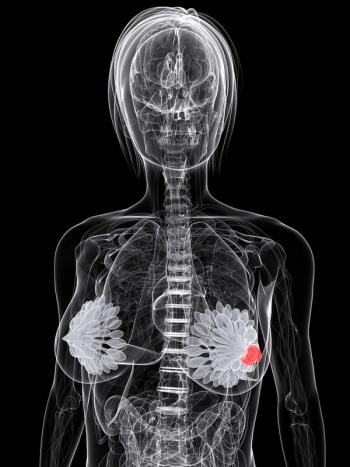
Addition of Disease Modifying Agents to Allogeneic HCT Shows Promise in MPNs
Investigators believe that disease modifying agents may demonstrate benefit in patients with myeloproliferative neoplasms prior to allogeneic hematopoietic cell transplant.
As age-related comorbidities and notable treatment-related mortality have proven to be challenges associated with curative allogeneic hematopoietic cell transplantation in patients with myeloproliferative neoplasms, investigators hypothesized that the addition of disease-modifying agents may act as a potential solution, according to Haris Ali, MD, during a presentation at the
“There have been significant improvements in the survival of patients with MPN due to medical therapy in the pre- and post-JAK inhibitor era,” Ali, an associate professor, Department of Hematology and Hematopoietic Cell Transplantation, at City of Hope Cancer Center in Duarte, California, said. “And this improvement in survival has been seen across all risk categories.”
The introduction of ruxolitinib (Jakafi; Incyte) has had an effect on allo-HCT, said Ali. Shanavas, et al,2 analyzed outcomes of patients who underwent HCT for MF with prior exposure to JAK1/2 inhibitors.
In the study, 100 patients were stratified into 5 groups. Group 1 were patients with clinical improvement, group 2 were patients with stable disease, group 3 consisted of patients with new cytopenia/increasing blasts/intolerance, group 4 were patients with splenomegaly, and group 5 included patients with leukemic transformation.
The investigators concluded that the data suggest that JAK1/2 inhibitors should be continued near to the start of conditioning therapy.
Current State of Allo-HCT
Ali noted that survival after allo-HCT has also improved according to data from the Center for International Blood & Marrow Transplant Research, with successive improvement in overall survival in 5-year increments starting in 2001–2005 through 2016–2019. Reviewing both US and European trends in the number of allo-HCTs conducted from 1995 to 2018 reveals a steady increase in the number of transplants performed.
Ali noted a number of improvements in the current state of allo-HCTs: there has been an improvement in pretransplant treatments, improved survival observed following transplant, the availability of alternative donors, and improved prevention and treatment of graft-vs-host disease that can be attributed to greater posttransplant use of cyclophosphamide or peri-transplant use of JAK inhibitors.
National and European guidelines are similar and identify patients who are candidates for allo-HCT.3 High risk patients with Dynamic International Prognostic Scoring System (DIPSS) plus that is greater than 1 or DIPSS greater than 2 are candidates for the procedure and low-risk candidates who are transfusion dependent, have low platelet counts, and a circulating blast count greater than 2% are also eligible.
What Is “Disease-Modifying?”
Drawing comparisons in chronic myelocytic leukemia (CML), Ali noted that as newer agents such as imatinib (Gleevec®; Novartis), dasatinib (Sprycel®; Bristol Myers Squibb), nilotinib (Tasigna®; Novartis), and bosutinib (Bosulif®; Pfizer) were introduced, the number of transplants decreased. As a result, “we don’t even consider transplant as a treatment option in early phase CML, unless the patient is progressing on multiple treatment and refractory to available treatment,” Ali said.
Ali then turned to defining a “disease-modifying effect,” calling it challenging, although the number of novel therapies undergoing evaluation in MPN is encouraging. These include pelabresib, imetelstat, natvemadlin, parsaclisib, and navitoclax.
“Is it mild fibrosis? For a decade we have been using volume reduction and total symptom improvement as the main primary end points, which are good, but not great, indicators for disease modification,” Ali said. He noted a number of reasons for this uncertainty, including a lack of understanding of the mechanism of disease progression, parameters, overall survival and mature data.
In addition to spleen volume and total symptom score, Ali suggested other potential indicators of modification: hematologic remission or improvement, reduction in malignant clones or inflammatory cytokines, delay in progression, and reversal of pathologic changes including fibrosis.
As Ali concluded, he noted that although the current treatments prolong survival, at the moment, they don’t offer a cure for myelofibrosis or MPN. Rather, novel treatments seem to improve responses but long-term follow up is still needed.
The role of disease-modifying agents may be an adjunct to transplant, Ali said. With ongoing research, disease-modifying agents should improve disease responses, thus improving transplant outcomes.
“By improving performance status, patients who may not be eligible for transplant earlier can become transplant-eligible,” Ali said. “Disease-modifying agents may also provide clinicians more time to identify donors and their potential use in posttransplant as maintenance or treatment of relapses,” Ali concluded.
References
- Ali H. Can potential disease-modifying agents change the indication for transplant in MPN? Presented at: 10th Annual Meeting of the Society of Hematologic Oncology (SOHO 2022); September 28-October 1, 2022; Houston TX.
- Shanavas M, Popat U, Michaelis LC, et al. Outcomes of allogeneic hematopoietic cell transplantation in patients with myelofibrosis with prior exposure to Janus Kinase 1/2 inhibitors. Biol Blood Marrow Transplant. 2016;22(3):432-440. doi:10.1016/j.bbmt.2015.10.005
- NCCN Clinical Practice Guidelines in Oncology. Myelodysplastic syndromes. Version 1.2023. September 12, 2022. https://www.nccn.org/professionals/physician_gls/pdf/mds.pdf
Newsletter
Stay up to date on recent advances in the multidisciplinary approach to cancer.

















































































